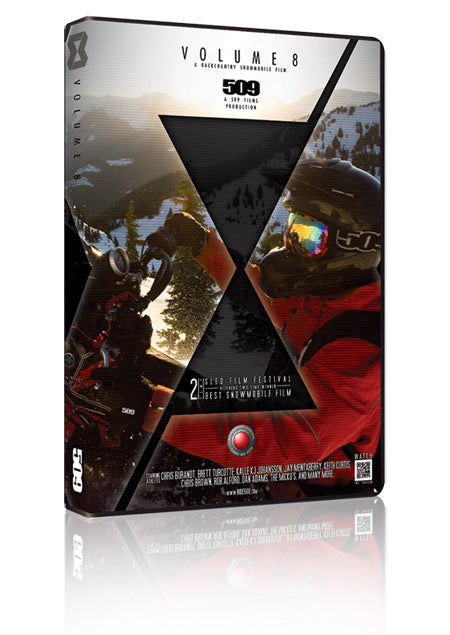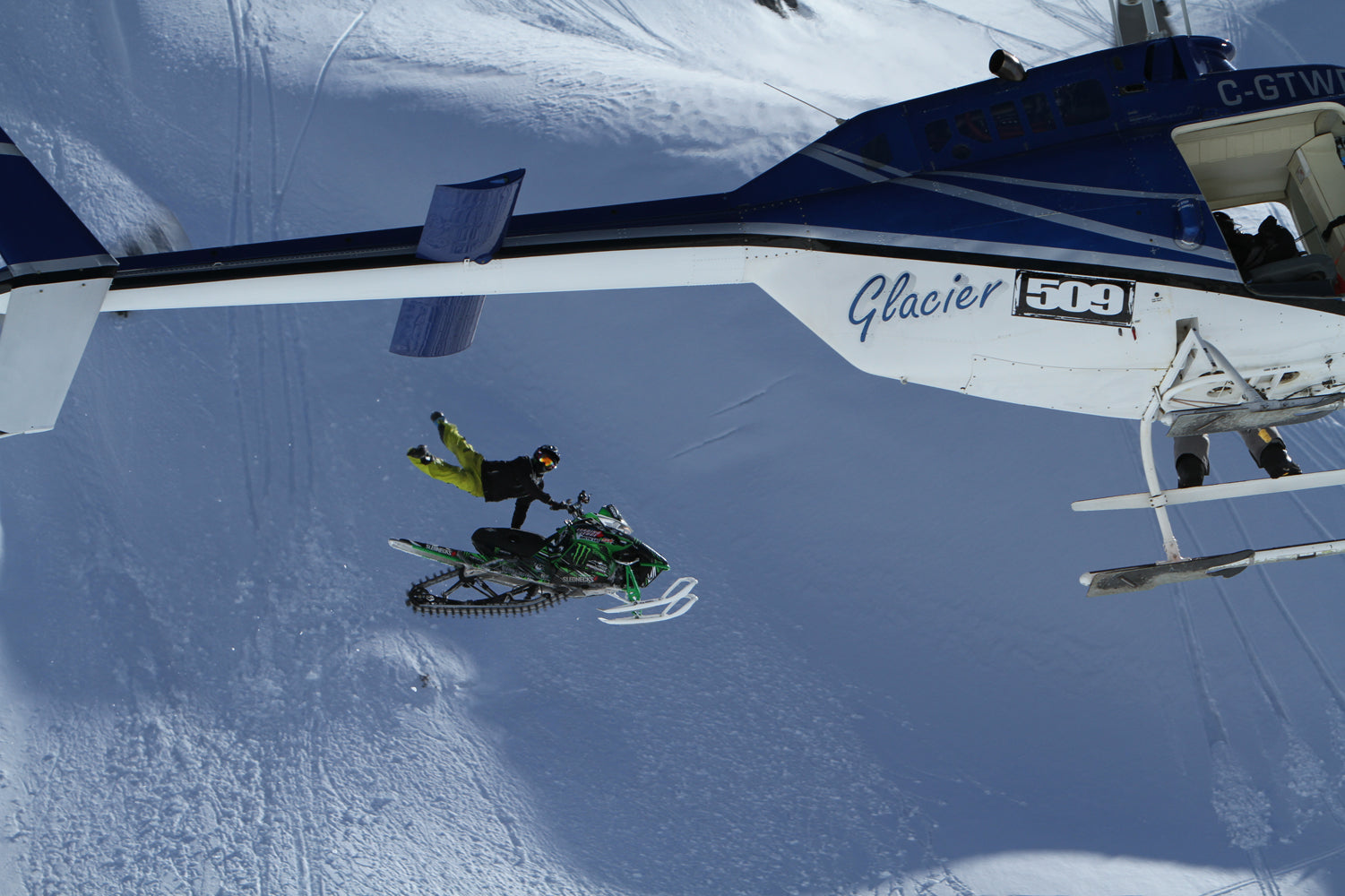My name is Stephen Clark and I’m a freelance motorsports photographer and videographer. I’ve been shooting full time since 2006, and these days, my main focus is on snowmobile photography. I spend my winters in the backcountry chasing some of the best snowmobilers in the world around with a camera. I started out shooting stills, and when the DSLRs added video capabilities, I began experimenting more with video. Over the past few years I’ve shot a number of short YouTube videos, and 509 Volume 8 is the first full-length film I’ve been a part of.
509 is a Spokane based company that started out making snowmobile films about a decade ago and have grown to major snowmobile brand with a line of goggles and helmets. I started working with 509 on still photography about 3 years ago, and this past year, an opportunity came up to shoot video for the new Volume 8 film. I accepted the challenge and worked with the editor and Canadian videographer Mike Reeve. Mike shot with the Canadian riders, and I shot with the US riders under the direction of 509 owner Tom Delanoy.
Collectively we decided to make a documentary style snowmobile film focusing on about ten of the best snowmobile riders in the world. Each segment focused on a different rider and told unique stories about snowmobiling and their life. For example, one segment tells the story of how one of the riders works around the clock all summer on a shrimp boat so he can ride sleds all winter. The concept is fairly unique in our industry, and it was really cool to be able to tell the riders' stories and show aspects of their lives that have never been seen before. Mike did a great job editing the film to have a good balance between extreme snowmobile footage and interesting documentary footage.
The highlight of the project was a trip to British Columbia in May. I took a couple of riders up there and met with Mike and the Canadian crew. We had half a dozen of the best riders in the world with a helicopter and at least three cameras on them at all times. The riders went huge, and we had great weather and incredible terrain. After several months of struggles, everything came together for that shoot, and those few days contributed a lot toward the final film.
The primary camera for the US footage was a RED Epic and a Sony FS700 in Canada both using Canon L series lenses. A Canon 5D Mark III was used as a back-up video camera, both for still and in situations where it was better to use a smaller camera. The main reason for using the RED and Sony were for their high frame rates that allowed us to really slow down the action in certain situations. We used GoPro Hero 3 cameras to get unique perspectives on the action.
The majority of the footage was shot at high elevation, deep in the backcountry at freezing temperatures. It's hard enough getting to these locations, much less packing in a bunch of equipment, so we went as light as possible on equipment. We carried cameras in backpacks and Manfrotto tripods strapped to the back of snowmobiles in padded packs. In some of the non-snow shots, we used a glidecam and sliders to add some motion to the shot.
Doing this project, we learned that you have to fight for every single second of usable footage, and that it takes a huge amount of footage to put together an hour-long film. The number of variables and things that can go wrong shooting action video is much greater than with stills. When shooting action stills, you only need to capture a split second of action to get the shot; however, with video, you need to capture the whole moment. Then you add in the complexities of stabilizing the camera, audio, frame rates, and it can become a bit of a nightmare. We had two really close calls with avalanches, wrecked several sleds, and constantly battled snow and weather conditions. It definitely wasn’t easy, but it’s really satisfying now to see it all come together.
Another new challenge with the RED was learning the different frame rates and knowing when to use them. At first I had a tendency to shoot too much at high frame rates—it looked really cool seeing everything in slow motion, but it quickly starts to look pretty boring. As the season went on, I learned to use the high frame rates more sparingly and typically only used high frame rates in really high action tightly cropped situations.
My suggestion to anyone looking to make a living from photography or videography would be to find a niche that you love and work hard to perfect your work and build a client base. And if you are shooting video, make sure you work with a really good editor because they will make your work look good.
 509 Volume 8 will debut at a premiere in Spokane on August 23rd and will be available soon after on DVD, Blue Ray, and iTunes.
509 Volume 8 will debut at a premiere in Spokane on August 23rd and will be available soon after on DVD, Blue Ray, and iTunes.
KEEP UP WITH STEPHEN: Website | Facebook
KEEP UP WITH MIKE REEVE: Website





